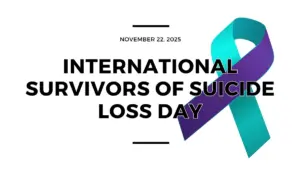How Much Fentanyl is Lethal ng/ml is a question that can mean the difference between life and death. Understanding how little it takes for fentanyl to become lethal can help raise awareness and save lives.
But what makes this drug so powerful, and how much is considered too much when used outside of medical care?

What Is Fentanyl?
Fentanyl is a powerful synthetic opioid used to treat people with severe or long-term pain, such as pain after surgery or pain from serious health conditions like cancer. It works by affecting the brain and nervous system to reduce the body’s perception of pain.
Fentanyl is a Schedule II controlled substance, which means it has accepted medical uses but also carries a high risk of misuse or addiction if not taken properly.
When prescribed by a licensed medical professional, fentanyl can be safe and effective. However, because of its strength, patients must be closely monitored to prevent misuse, dependency, or accidental overdose.
How Powerful Is Fentanyl Compared to Other Opioids?
Fentanyl is one of the strongest opioids used in medicine today. It’s about 100 times more powerful than morphine and 50 times stronger than heroin.
However, that same power makes fentanyl extremely dangerous outside of medical care. Even a tiny amount (just two milligrams) can be lethal, depending on a person’s body size, tolerance, and past usage, according to the U.S. Drug Enforcement Administration (DEA).
To put this into perspective:
- DEA analysis found that many counterfeit pills contain anywhere from 0.02 to 5.1 milligrams of fentanyl, meaning a single fake pill could contain more than twice the lethal dose.
- 42% of pills tested by the DEA contained at least 2 mg of fentanyl, which is enough to cause death in many people.
- Drug trafficking organizations often distribute fentanyl by the kilogram, and just one kilogram has the potential to kill 500,000 people.
Because fentanyl is so potent, even a few grains of salt–sized particles can be enough to stop someone’s breathing. This is why illicit fentanyl, often mixed into drugs like heroin, cocaine, or counterfeit painkillers, has become a leading cause of accidental overdose deaths across the country.
Illicit Fentanyl and the Hidden Danger in Street Drugs
Much of what’s causing harm today is illicitly manufactured fentanyl, which is fentanyl made illegally and mixed into street drugs like heroin, cocaine, meth, or fake prescription pills. This growing issue has become a major part of what many now call the fentanyl crisis, a public health emergency affecting communities across the U.S.
According to the Centers for Disease Control and Prevention (CDC), synthetic opioids like fentanyl are now the main cause of overdose deaths in the United States. Comparing two 12-month periods ending January 31, 2020, and January 31, 2021:
- Overdose deaths involving opioids rose by 38.1%.
- Deaths involving synthetic opioids, mostly illicit fentanyl, rose by 55.6%.
This shows that illicit fentanyl is driving most of the increase in fatal overdoses. Drug users may think they’re taking something else, like a pain pill or a stimulant, but what they’re really getting is a dose that could stop their breathing within minutes.
The spread of illegal fentanyl in street drugs has made it one of the most dangerous public health threats today, turning what might seem like a single pill or small hit into a life-or-death risk.
Recognizing the Signs of Fentanyl Overdose
Knowing what to look for can help save a life. Here are the most common signs of a fentanyl overdose:
- Slow or stopped breathing — the person may take very shallow breaths or none at all.
- Small, pinpoint pupils — the black centers of the eyes look tiny.
- Cold, clammy skin — skin may feel pale, sweaty, or bluish, especially on the lips or fingertips.
- Unresponsiveness — they may be unconscious or unable to wake up.
- Weak pulse or no pulse — heartbeat may be slow or hard to detect.
- Choking or gurgling sounds — also known as the “death rattle.”
- Extreme drowsiness — they may seem to “nod off” and not respond when spoken to or touched.
Recognizing these warning signs and acting fast can make the difference between life and death. Even if you’re not sure, it’s always safer to call for help.
Preventing Fentanyl Poisoning and Staying Safe
Some simple ways to help prevent fentanyl poisoning include the following:
- Never take pills or powders that didn’t come from a pharmacy. Many fake pills sold on the street or online look real but may contain deadly amounts of fentanyl.
- Avoid using drugs alone. If something goes wrong, there’s no one there to help or call for help.
- Use fentanyl test strips. They can detect if a drug has fentanyl before it’s used.
- Keep naloxone (Narcan) nearby. This life-saving medicine can reverse an opioid overdose if given in time.
- Learn the signs of an overdose. Slow breathing, tiny pupils, and unresponsiveness mean it’s time to act fast.
- Talk to your friends and loved ones about fentanyl risks and what to do in an emergency.
If you think someone might be overdosing:
- Call emergency services immediately (911 in the U.S.)
- Give naloxone (Narcan) if it’s available; it can reverse the effects of an opioid overdose.1
- Stay with the person until help arrives. Try to keep them awake and breathing if possible.
The best way to stay safe is to know the risks, take precautions, and act quickly if an overdose happens. Every life saved from an overdose is a chance for a new beginning; it can be the first step toward getting help, starting recovery, and rebuilding hope for the future.
How Integrated Care Helps With Relapse Prevention and Long-Term Recovery
Integrated care means combining medical treatment, mental health support, and counseling to treat the whole person, not just the addiction. It looks at how physical health, emotions, stress, and environment all play a role in recovery.
Here’s how this approach helps people build lasting change:
- Medical support for safety and stability. Doctors help manage withdrawal symptoms and create a plan for ongoing care so recovery starts safely.
- Therapy for emotional healing. Counselors work with individuals to understand the reasons behind substance use, build coping skills, and manage triggers that can lead to relapse.
- Community and accountability. Group therapy and peer support make it easier to stay motivated and connected to others who understand the journey.
- Relapse prevention planning. Each person learns strategies to recognize early warning signs, manage cravings, and stay grounded during difficult moments.
At Oceanrock Health and South Coast Counseling, recovery is about progress, self-compassion, and support. Their programs are designed to help each person find balance, rebuild confidence, and create a healthier future.

Source:
- CDC. (2024, April 30). Lifesaving Naloxone. Stop Overdose. https://www.cdc.gov/stop-overdose/caring/naloxone.html







